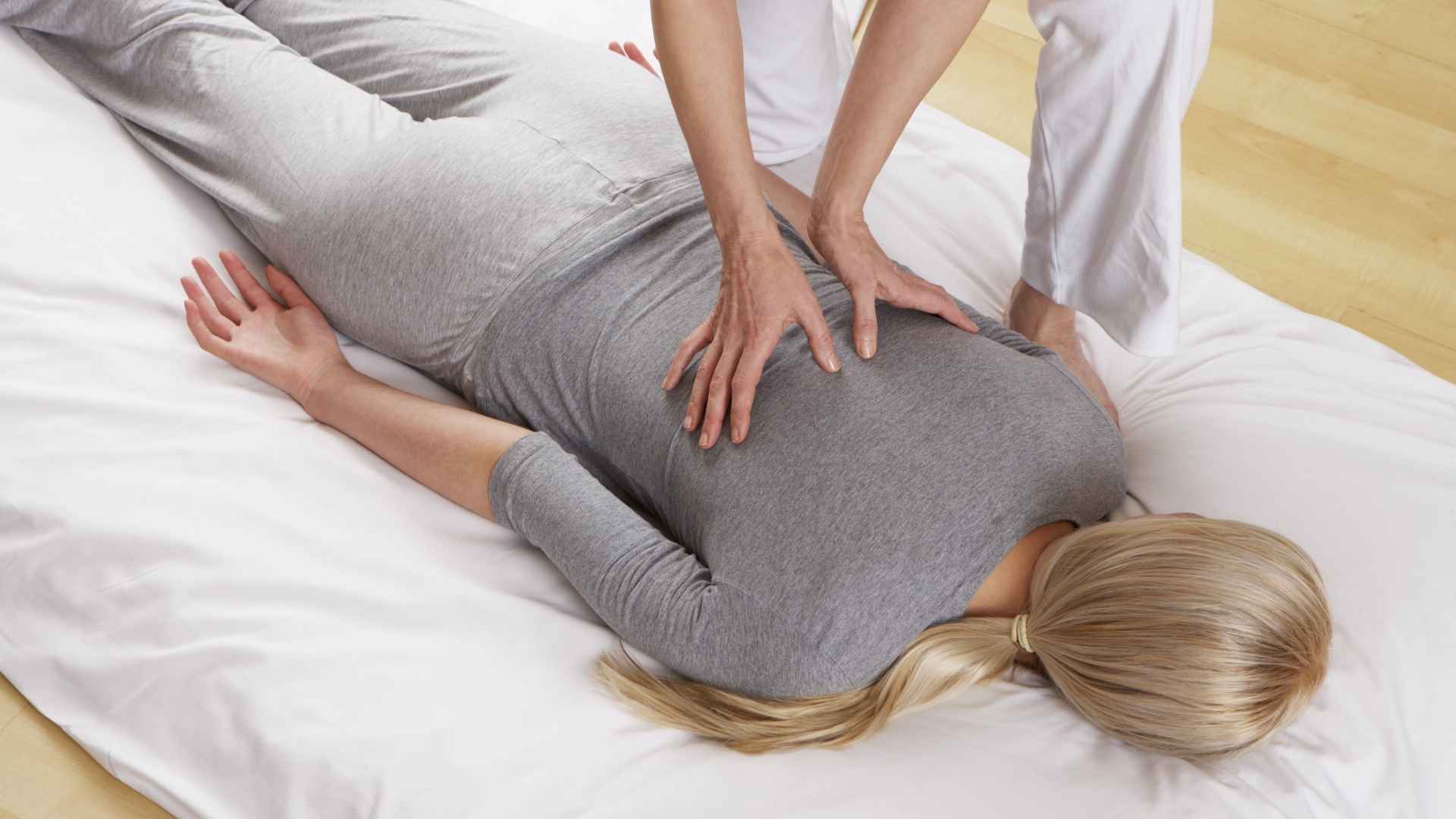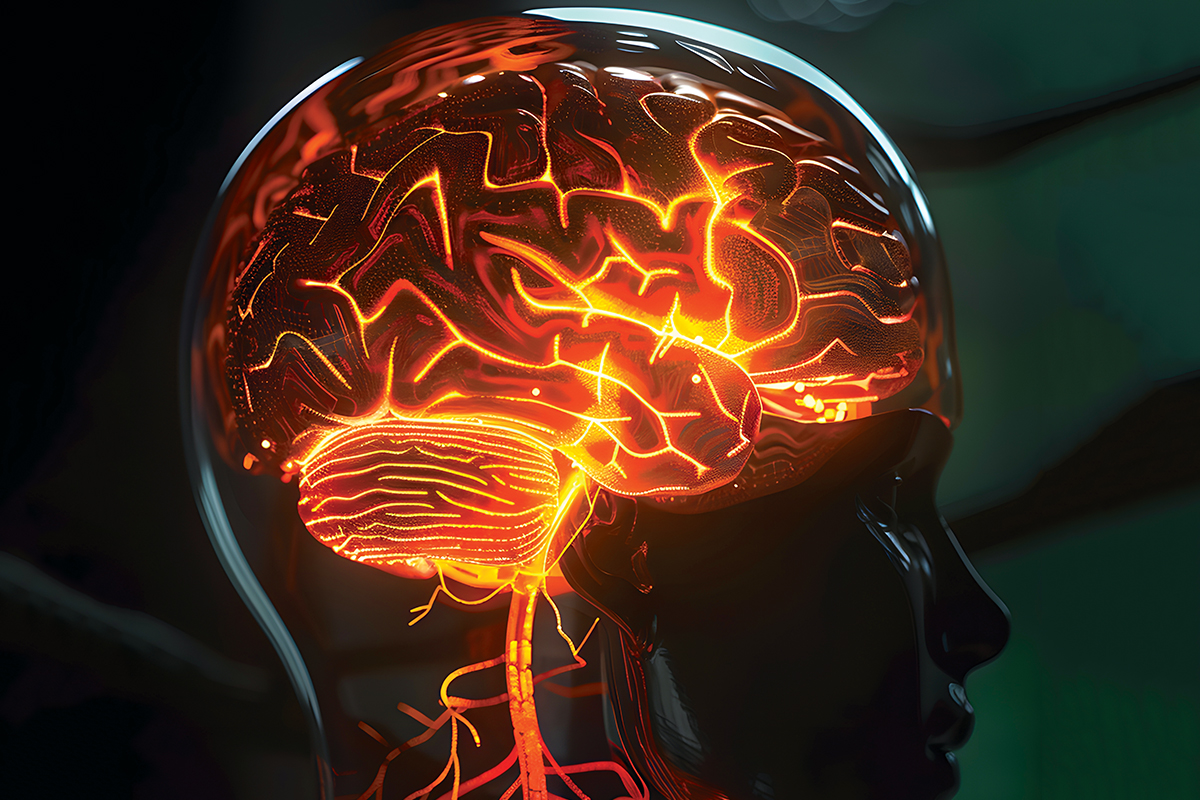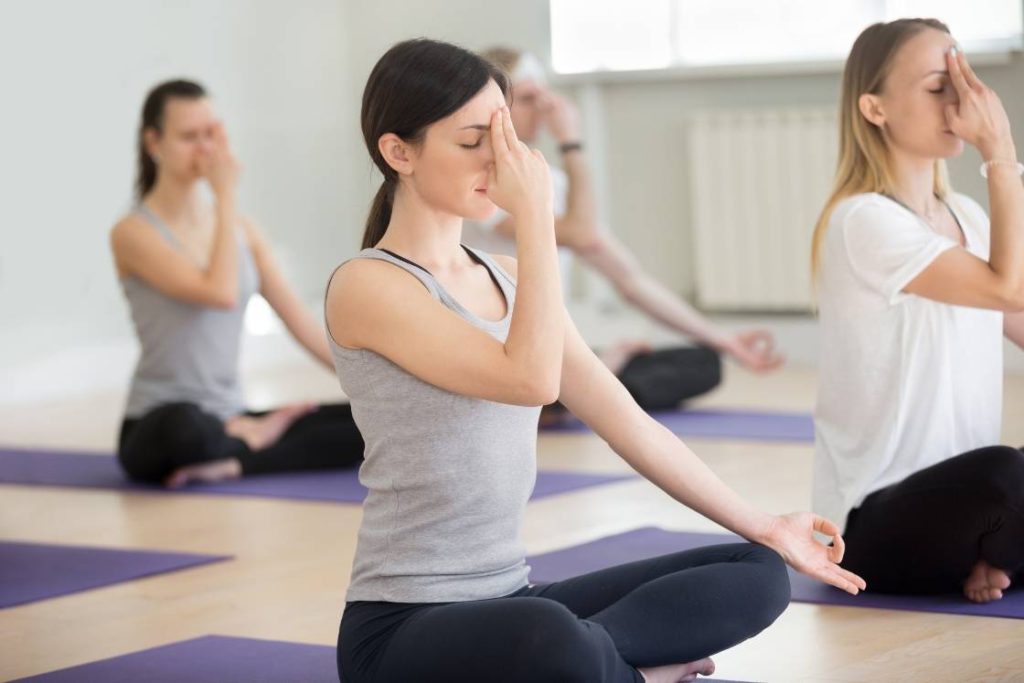High-functioning women often wear many hats. They juggle careers, relationships, families, and expectations. From the outside, they seem calm and in control. But beneath the surface, emotional fatigue builds silently.
Invisible stress becomes a constant companion. It doesn’t scream. It whispers—through tight shoulders, clenched jaws, racing thoughts. Over time, this stress manifests as anxiety. Not always panic attacks or tears. Sometimes it’s numbness, irritability, or the inability to rest.
Many women push through it. They become masters at coping. But coping isn’t healing.
This is where touch-based therapy steps in. Grounded in ancient traditions and backed by modern science, therapies like shiatsu offer a path to natural anxiety relief. They work not by talking, but by feeling. By reconnecting body and mind through intentional touch.
Touch therapy for stress helps regulate the nervous system. It calms the fight-or-flight response. It brings awareness to tension stored in muscles and tissues. With skilled hands, a therapist can guide the body to release what the mind struggles to express.
Shiatsu, in particular, uses gentle pressure on energy meridians. It supports emotional balance by restoring flow where there is blockage. Sessions feel grounding, safe, and deeply nurturing.
For women carrying invisible burdens, this kind of therapy can be transformational. It doesn’t demand words or explanations. It simply asks you to pause, breathe, and be held.
In a world that praises productivity, touch-based therapy offers a return to presence. A quiet revolution. A reminder that healing is not weakness, but wisdom.
Why Mind-Only Approaches Fall Short
Breathwork. Journaling. Talk therapy. These are powerful tools. They offer clarity, insight, and emotional release. But for many women, they aren’t enough. Why? Because anxiety doesn’t live in the mind alone. It’s stored in the body.
You can understand your triggers and still feel overwhelmed. You can practice affirmations and still have panic attacks. That’s not failure. It’s biology.
The nervous system holds memories—especially those tied to stress and trauma. Muscles tense. Breath shortens. The body prepares to protect. Over time, this physical guarding becomes chronic.
Mind-only approaches can overlook this. They often assume that awareness leads to change. But insight without somatic release can keep healing stuck.
Breathwork, while helpful, can sometimes bypass the root cause. It calms the surface, but deep tension may remain. Talk therapy helps process thoughts and emotions. Yet it doesn’t always address the physical impact of long-term stress.
This is especially true for high-functioning women. They often live in their heads. They overthink, overanalyze, and override physical signals. They may feel disconnected from their bodies without realizing it.
Touch-based therapies offer a bridge. They don’t require words. They meet the body where it’s at. They invite safety, softness, and reconnection.
By engaging the body, healing becomes more complete. Emotions find a pathway out—not just through language, but through sensation. Muscles release. Breathing deepens. The nervous system re-learns how to feel safe.
In this way, touch therapy doesn’t replace mind-based approaches. It completes them. It’s not either-or—it’s both-and. To truly relieve anxiety, the body must be part of the conversation. Not as an afterthought. But as a wise, essential partner in healing.
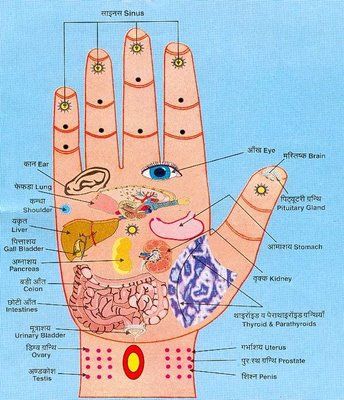
This image illustrates a reflexology chart mapping various internal organs and glands to specific points on the palm. It represents the belief that stimulating these areas can promote healing and balance in corresponding body parts.
How Pressure Point Therapy Helps
Pressure point therapy is more than just touch. It’s a science-backed method to help the body reset. It brings calm, clarity, and control—especially for women dealing with emotional overload.
One of the key players in anxiety is the vagus nerve. This nerve runs from the brainstem down through the body. It connects the brain to the heart, lungs, and gut. When the vagus nerve is activated, the body shifts into “rest and digest” mode.
This is the opposite of “fight or flight.” Pressure point therapy stimulates the vagus nerve in a gentle, effective way. Through targeted touch, it signals safety to the body. The heart rate slows. The breath deepens. Muscles start to soften.
You may not realize how shallow your breathing has become—until it opens up. With pressure on specific points, the diaphragm relaxes. Oxygen flows more freely. This alone can bring a wave of relief. The body no longer feels like it’s on high alert.
Touch therapy also helps bring attention back to the body. Anxiety often pulls us into the future. It makes the mind race. But pressure point therapy grounds us in the present. The physical sensations draw us back—back to the breath, the skin, the here and now.
Shiatsu, for example, applies steady pressure along energy meridians. These meridians correspond with internal organs and emotional states. A skilled practitioner can find areas of tension or imbalance.
Then, with hands or thumbs, they apply just enough pressure to release the block. This is not a painful process. It’s calming. You may feel warmth, tingling, or a deep sense of release. The body responds by letting go. Over time, sessions help retrain the nervous system. They teach the body how to relax again—how to trust.
That’s why pressure point therapy works so well for natural anxiety relief. It’s not about forcing change. It’s about inviting it. This therapy gives women a quiet space to reconnect—with themselves, their breath, and their strength. It’s gentle, but powerful. Subtle, but lasting.
Immediate and Long-Term Shifts
Touch-based therapy doesn’t take months to make a difference. For many women, the change is immediate. The body responds fast when it feels safe. After just one session, sleep often improves. The mind quiets. The muscles soften. The nervous system slows down. It becomes easier to fall asleep—and stay asleep.
That’s because touch signals the brain to release calming chemicals. Oxytocin, the “feel-good” hormone, increases. Cortisol, the stress hormone, decreases. This chemical shift helps women feel more relaxed and emotionally stable.
Fewer meltdowns. Less emotional reactivity. When the body feels grounded, it’s easier to respond—not just react. Over time, deeper shifts begin. The body learns how to stay in balance. It doesn’t hold tension the way it used to. You don’t get overwhelmed as quickly. Triggers lose their power.
The mood becomes more steady. You don’t feel like you’re riding an emotional rollercoaster anymore. There’s more emotional space—space to think clearly, make decisions, and feel joy again.
For high-functioning women, these shifts matter. It’s not just about “feeling better.” It’s about being able to show up—for work, family, and self—with clarity and calm.
Touch therapy also builds body awareness. You begin to notice early signs of stress. A tight jaw. Shallow breathing. A clenched stomach. And because you’re aware, you can take action before things spiral.
Long-term, these sessions create a foundation for resilience. The nervous system becomes more flexible. It adapts better to life’s challenges. You’re not stuck in survival mode.
This isn’t a quick fix. But it is a lasting one. With regular sessions, the benefits add up. Many women report fewer panic attacks, improved focus, and more restful sleep even months later.
Touch therapy supports healing at the root—not just the symptoms. It reconnects the body and mind. It teaches you how to feel safe in your own skin again. This is the kind of shift that changes everything. Quietly. Deeply. For good.
Support for Burnout and Overwhelm
Burnout doesn’t happen overnight. It builds slowly. One task, one responsibility, one expectation at a time. For high-functioning women, it’s easy to miss the signs. You keep going. You push through. You tell yourself it’s just a rough week. But over time, your energy drains. Your joy fades. Everything feels heavy.
This is more than stress. It’s overwhelm. It’s emotional exhaustion. And it needs more than rest or a weekend off. That’s where hands-on care becomes essential. When you’re burned out, words may not reach you. The body is too tense. The mind is too tired. You don’t need more input—you need to feel supported.
Touch-based therapy offers exactly that. No pressure to talk. No need to perform. Just a quiet space to receive. When a trained therapist places their hands on tense muscles or pressure points, the body begins to respond. Slowly, gently, it releases what it’s been holding. The breath deepens. The nervous system calms.
This kind of care goes beyond comfort. It tells the body: You are safe now. You can rest. For women in burnout, this message is vital. It resets the system. It restores a sense of balance.
Overwhelm often makes you feel disconnected. From your body, your emotions, even your identity. Hands-on therapy helps reconnect those pieces. It grounds you. It brings you back to yourself.
This isn’t luxury. It’s medicine. In a world that demands so much from women, touch-based care is not optional—it’s essential. It meets burnout with compassion. It brings healing to where it’s needed most.
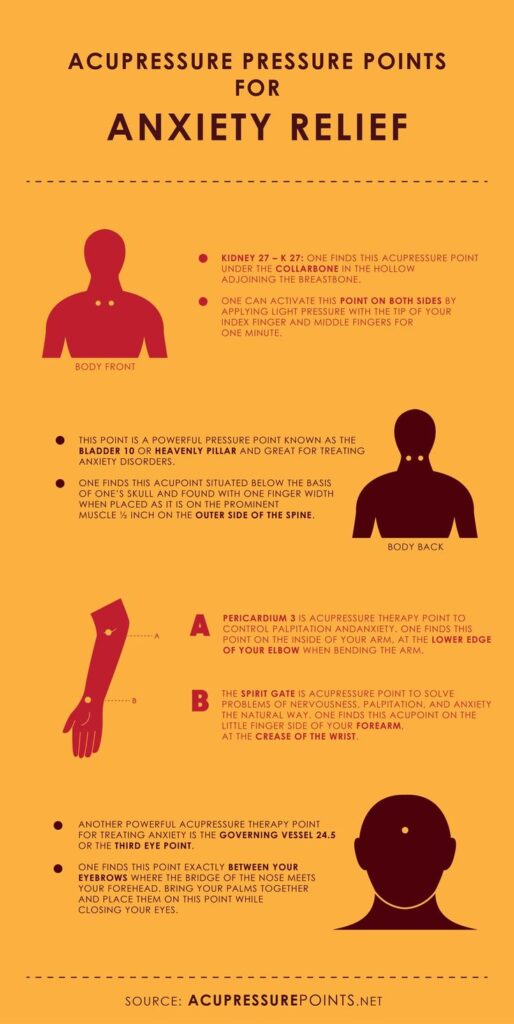
This infographic highlights key acupressure points that can help relieve anxiety, such as Kidney 27, Bladder 10, and the Third Eye Point. By applying gentle pressure to these areas, one may experience reduced stress, calmness, and improved emotional balance.
A Closing Thought
You don’t have to explain everything to heal. You don’t have to have it all figured out. Sometimes, the most powerful reset is the one that doesn’t require words.
When your mind is overloaded and your body is tense, talking may feel like just another task. That’s when touch-based therapy becomes a gift. A non-verbal reset. A space to breathe, release, and simply be.
It’s not about fixing you. You are not broken. It’s about letting go of what your body has been quietly carrying. Stress, tension, exhaustion—they all live in your muscles, your breath, your nervous system. You don’t have to solve them alone.
Touch therapy meets you exactly where you are. No pressure. No judgment. Just presence. It invites calm where there’s chaos. Ease where there’s effort. Stillness where there’s noise. You deserve that space. You deserve that support.
If you’ve been coping, pushing, surviving—it may be time to pause. To step out of your head and into your body. To allow a different kind of healing.
Try a non-verbal reset.
Let your body be heard without saying a word. Let skilled hands guide you back to balance. Whether it’s shiatsu, acupressure, or another form of touch therapy—give yourself permission to receive.
This is not indulgence. This is restoration. Because when you feel whole again, everything changes. Your energy returns. Your sleep improves. Your emotions feel lighter. You become more you. Start with one session. One hour of deep care. It might be the turning point your body has been waiting for.
FAQs on Emotional Overload & Anxiety in Women: The Healing Power of Touch-Based Therapy
What is touch-based therapy for stress relief?
Touch-based therapy uses physical contact—such as pressure points, massage, or energy work—to calm the nervous system and relieve stress.
How does touch therapy help with anxiety in women?
It activates the parasympathetic nervous system, reduces cortisol levels, and supports emotional release through physical relaxation.
What is shiatsu and how does it work?
Shiatsu is a Japanese bodywork technique that uses finger pressure on energy meridians to promote emotional balance and physical healing.
Why is touch therapy considered a natural anxiety relief method?
Because it works with the body’s own systems—like breath, circulation, and nerve signaling—without medication or invasive techniques.
Can touch therapy help if talk therapy hasn’t worked?
Yes. Many women find relief through touch when verbal processing feels overwhelming or ineffective.
Why do mind-only approaches sometimes fall short?
Because anxiety is stored not just in thoughts, but also in muscles, breath, and the nervous system.
What role does the vagus nerve play in anxiety?
The vagus nerve helps regulate mood and stress response; when activated, it promotes calm and balance.
How does pressure point therapy affect the vagus nerve?
It stimulates it indirectly, helping the body shift from “fight or flight” to “rest and digest.”
What physical signs suggest I need body-based therapy?
Tight jaw, shallow breath, constant fatigue, or tension that doesn’t ease with rest or talking.
How quickly can I feel results from a touch therapy session?
Some women feel calmer, sleep better, or experience less emotional reactivity after just one session.
What happens during a shiatsu or touch therapy session?
You lie fully clothed on a mat or table while the practitioner applies pressure along specific points and energy lines.
How often should I go for touch therapy sessions?
Weekly or bi-weekly is ideal for lasting change, but even monthly sessions can offer benefits.
Do I need a referral or diagnosis to try touch therapy?
No. It’s accessible to anyone seeking emotional or physical relief, with or without a formal diagnosis.
Can touch therapy help with burnout?
Yes. It soothes the nervous system, restores energy, and supports emotional recovery.
Is shiatsu safe during pregnancy or postpartum?
Yes, with a trained practitioner. It can help relieve stress, anxiety, and physical discomfort.
Can touch therapy release emotions?
Absolutely. Tears, laughter, or deep sighs are common as the body lets go of stored feelings.
What if I don’t feel anything during the session?
That’s okay. Some effects are subtle at first. The body may need time to build trust and awareness.
Will I have to talk during the session?
No. These therapies are non-verbal and focus on sensation and breath, not conversation.
Can touch therapy replace medication or talk therapy?
It can complement them, but you should consult your healthcare provider before making changes.
How do I find a qualified touch-based therapist near me?
Look for certified shiatsu practitioners, massage therapists, or somatic therapists through local wellness directories or professional boards.

